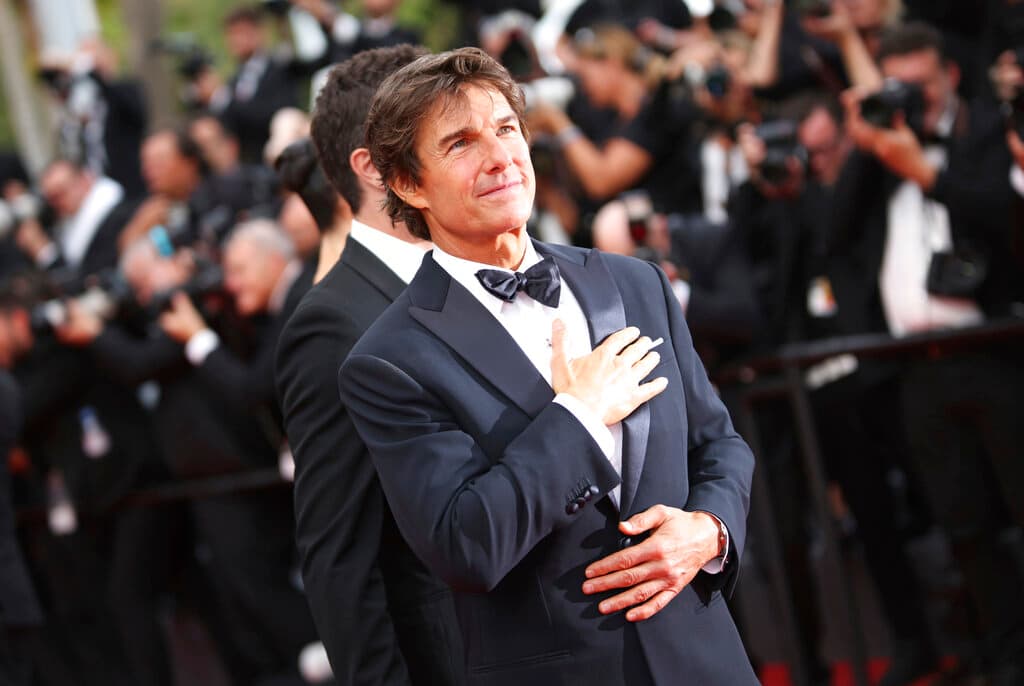Much Has Changed in Hollywood and the World Since ‘Top Gun’ Was Released
‘Top Gun: Maverick’ lands in a more bitter world, where in some quarters nationalism, bravado, and war are looked down upon as expressions of toxic masculinity and imperialism.

The 1986 film “Top Gun,” directed by Tony Scott, was a product of a different world than just welcomed the release of “Top Gun: Maverick.” The Hollywood of the 1980s, under President Reagan’s administration, reflected a culture of patriotism, confidence, and rejuvenation, when nobody batted an eye as the godless communists were portrayed being blasted out of the sky.
It was a less ironic world, and that can be seen in the cheesy but sincere affectation of “Top Gun” that admired the values of bravado and God-given talent. The novelist Tom Wolfe described this as “the right stuff,” the essence of confidence, ego, and talent that pushed America’s fighter pilots to become the best of the best.
“Top Gun: Maverick” lands in a more bitter world, where in some quarters nationalism, bravado, and war are looked down upon as expressions of toxic masculinity and imperialism.
The editor of “Hollywood in Toto,” Christian Toto writes that modern Hollywood “would rather drill down on the nation’s flaws, besmirch current war efforts or relive other national disgraces.”
In that environment, it’s no wonder that a sequel to such an overtly glorifying film feels somewhat sterile and timid.
The film doesn’t completely eschew its legacy, but the implicit nationalism of the first film is given only a perfunctory presentation here. The American flag, so prominent in “Top Gun,” is always rendered secondary to the characters or placed in the background in “Maverick.” The new film doesn’t want to appeal to the nationality it is representing, doubtless due to fears it may turn off audiences both domestic and foreign.
The movie doesn’t even identify the enemy nation being fought — simply referring to a rogue state with ongoing nuclear weapons development. One might assume this is a reference to Iran, but the final action scenes depict a lush forest with snow capped mountains, far from the stereotypical deserts of the Middle East.
What little the film does have to say on the ethics of its premise are just reflections on how Maverick is too much of a renegade and a rulebreaker to follow orders or obey the rules, with characters philosophizing that his unruly tactics “put them in a tight spot” because of how he uses his talents to break the rules or that he’s “not their first choice.” The film doesn’t comment on how such tactics fit into modern military engagements.
The result is a timid movie that is uninterested in politics and actively makes creative choices to avoid stepping on any potential viewer’s toes — even going as far as to edit out references to hot-button topics like Taiwan.
The filmmakers received criticism in 2019 when it was discovered that the Taiwanese flag and Japanese flag had been removed from actor Tom Cruise’s bomber jacket, due in part to the filmmakers having an eye on the lucrative Chinese market.
This decision was reversed prior to release, with the original flags being restored, though this was likely because the Chinese are already cracking down on all Western film releases.
As the entertainment website “ComicBookResources” reports, “the change comes amidst increased tension and an apparent split between Hollywood and China … forced by the Chinese Communist Party-ruled government, which has cracked down on the consumption of entertainment.”
The new film’s worst sin may be that it exists only as an extension of Hollywood’s obsession with nostalgia. It’s the latest in a long line of legacy sequels that revamp decades-old stories for name recognition, including “Blade Runner 2049,” “Star Wars: The Force Awakens,” “Ghostbusters: Afterlife,” and “Doctor Sleep.”
While such sequels can be good, they’re frequently exploitative and exhausting, dragging out geriatric movie stars for one last chance to crack one-liners. “Maverick” comes dangerously close to falling into this trap, with entire scenes from the first film being used as flashbacks. Supporters of these ideas would no doubt call the scenes homage.
Several of the new, younger characters correspond directly to the personalities of characters from the first film, with Miles Teller’s character being the son of a replacement for Goose and Hangman standing in for Iceman.
That the film doesn’t feel more like a creative fire sale is a testament to screenwriter Christopher McQuarrie’s talent. He is an ideal creative partner for the lead actor Tom Cruise — who excels in stories of single-mindedly talented renegades who seek conflict as a way of confirming that they are the best of the best.

